A 70-year Celebration on Dove Crag
Article by Chris Butterfield
It’s remarkable that over 70 years have passed since Alfred Wainwright first chronicled Dove Crag in his monumental work on the Lakeland Fells. This series, known as the Pictorial Guide to the Lakeland Fells, revolutionised perceptions of the Lake District, leaving an indelible mark on how this beautiful area is viewed. The story behind the creation of these guides is fascinating. Even before his 1941 appointment as an accountancy assistant at Kendal’s Borough Treasurer’s office, Wainwright harboured aspirations of writing a book about Lakeland. His passion for the region and dedication to his craft were evident early in his career, setting the stage for his later achievements.
In the early 1940s, Wainwright, eager to establish himself in his newly adopted town of Kendal, quickly gained local acclaim. His rise to prominence was particularly notable following the 1942 Kendal Holiday Week event, where his contributions led to significant success, making him a well-known figure in the community. Initially, Wainwright was commissioned to produce a handbook for Kendal. However, this project did not come to fruition, and he shifted his focus to the Lake District. Wainwright considered various book concepts during this period, but these initial ideas were eventually set aside. His passion for the Lakes took a definitive turn when he embarked on an ambitious project, creating a series of Pictorial Guides to the Lakeland Fells.




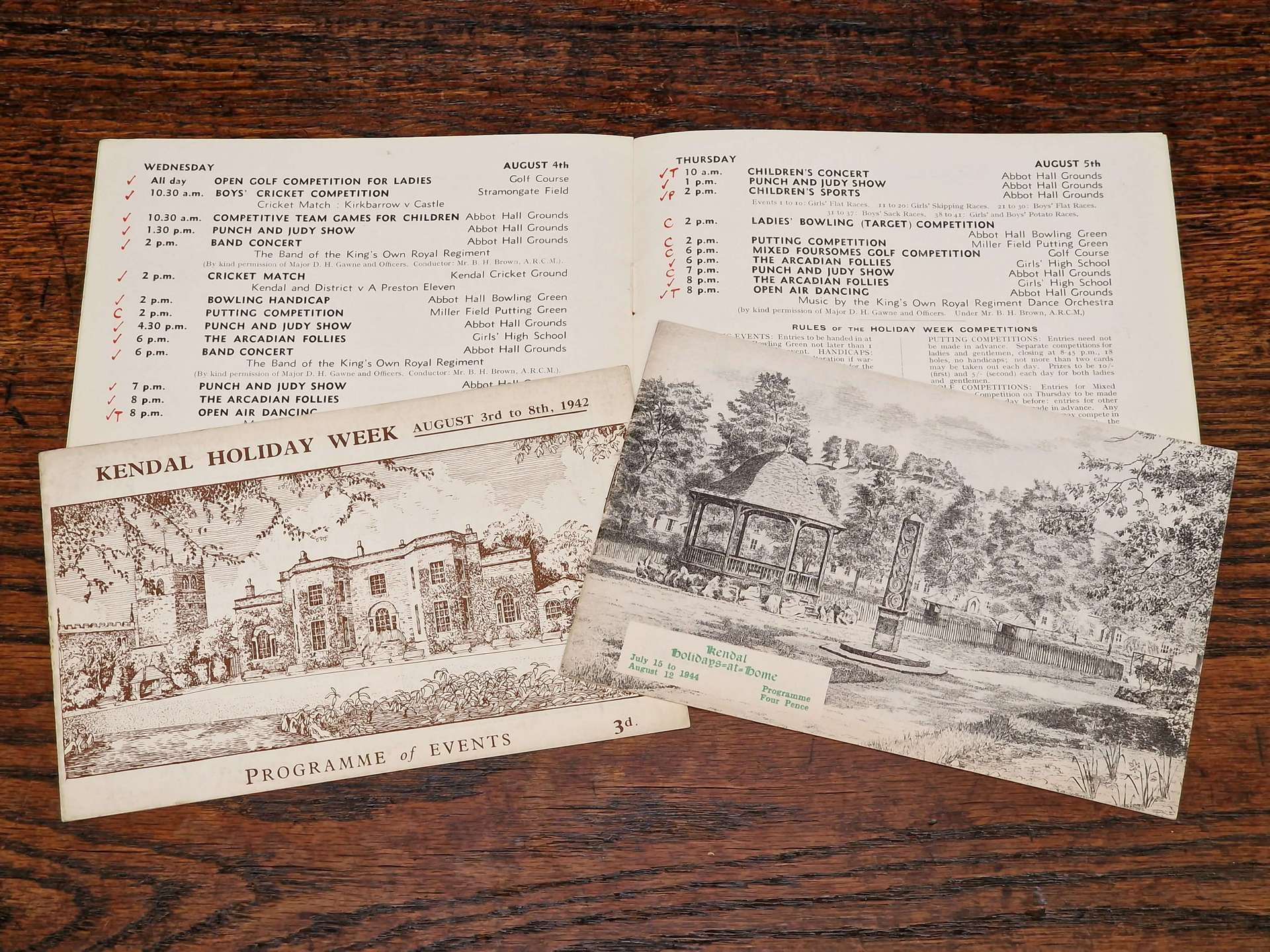
Wainwright divided the Lake District into seven distinct regions and began documenting the fells within them. The initial list of fells he compiled exceeded the 214 that are commonly referenced today. As his work progressed, some fells were excluded from the final count, suggesting a fluid and evolving selection process.
The criteria Wainwright used to select fells for inclusion in his guides were not strictly defined, leading to various interpretations. One common characteristic, with the exception of Castle Crag, was that the fells included were all above 1000 feet in elevation. Beyond this, Wainwright’s choices were influenced by a mix of personal preference and the fells’ significance or connection to particular groups within the Lake District. This subjective approach has led to discussions and debates among his followers about the rationale behind including certain fells.
Wainwright always said the project began as a personal walking journal to record his memories so he could look back on them in later life when he could no longer walk the fells. Despite the project’s beginnings as a journal, Wainwright entertained the idea of publishing his work quite early in the process. This suggests that the potential for a wider audience and sharing his experiences with others were considerations that played a role from the outset.
He estimated that completing all seven guidebooks would require 13 years. Remarkably, he did not factor in any days off in this timeline, indicating his rigorous dedication to the task.
On Sunday, 9 November 1952, Alfred Wainwright, who held a significant position in the Kendal Town Hall, would have likely been involved in the local Remembrance Day activities. That evening, he began the monumental task of documenting the Lake District fells. He started by describing the route from Ambleside to Dove Crag. His Lakeland guidebook odyssey had finally begun!
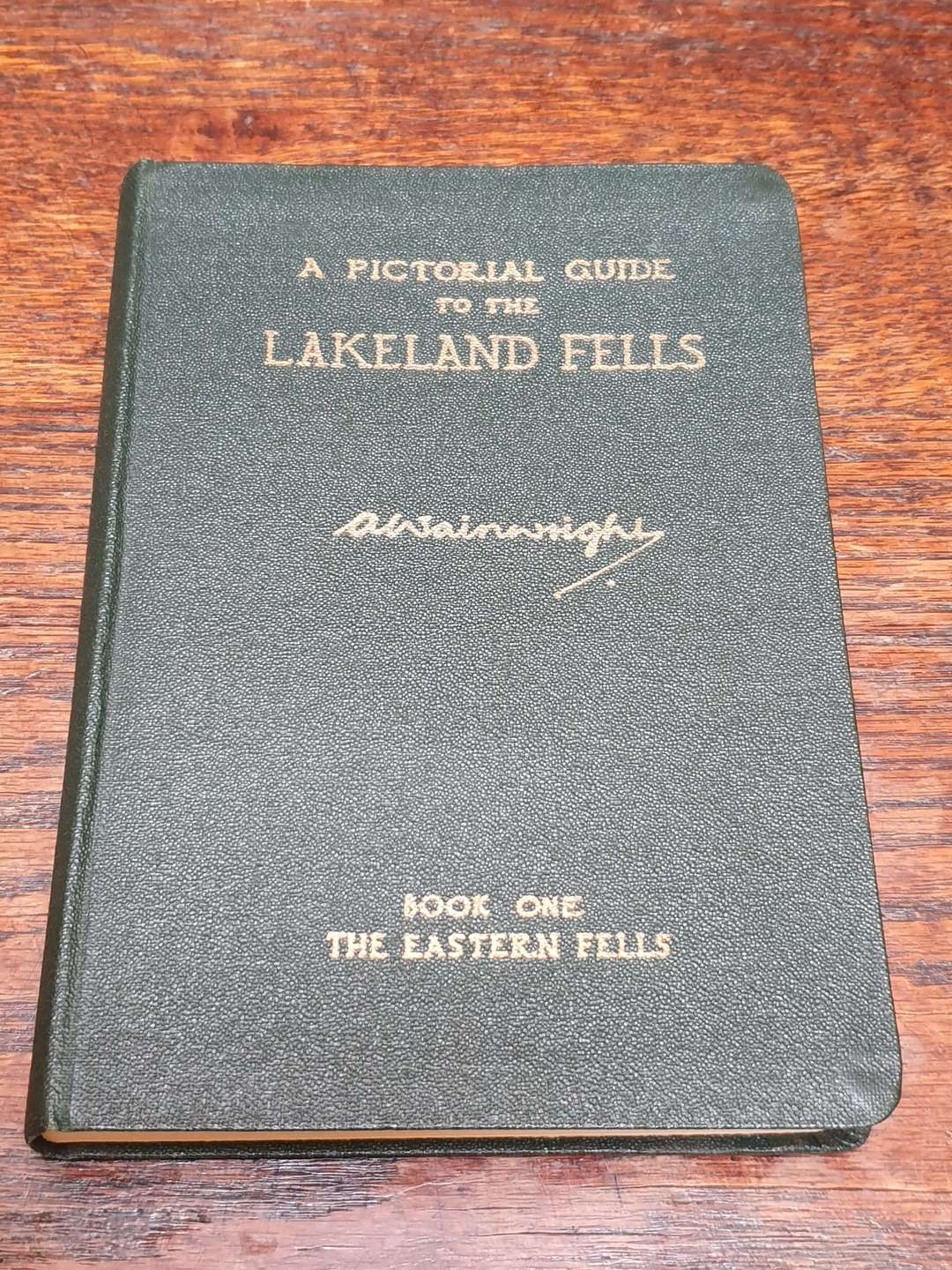
The original notebook used by Alfred Wainwright at the onset of his Lakeland guidebook project holds significant historical value. It provides insights into his approach and the early stages of his work. This notebook, preserved at the Kendal County Archive, is a crucial piece of the puzzle in understanding Wainwright’s process of creating his famous guides.
I acquired a facsimile of this notebook, which has given me a glimpse into Wainwright’s thought process and reveals an interesting detail about the chronology of Wainwright’s work. It shows that he had researched Fairfield and Little Hart Crag before focusing on Dove Crag. This information is significant as it indicates that, while Dove Crag was the first fell he wrote about for The Eastern Fells guidebook, it was not the first fell he researched.
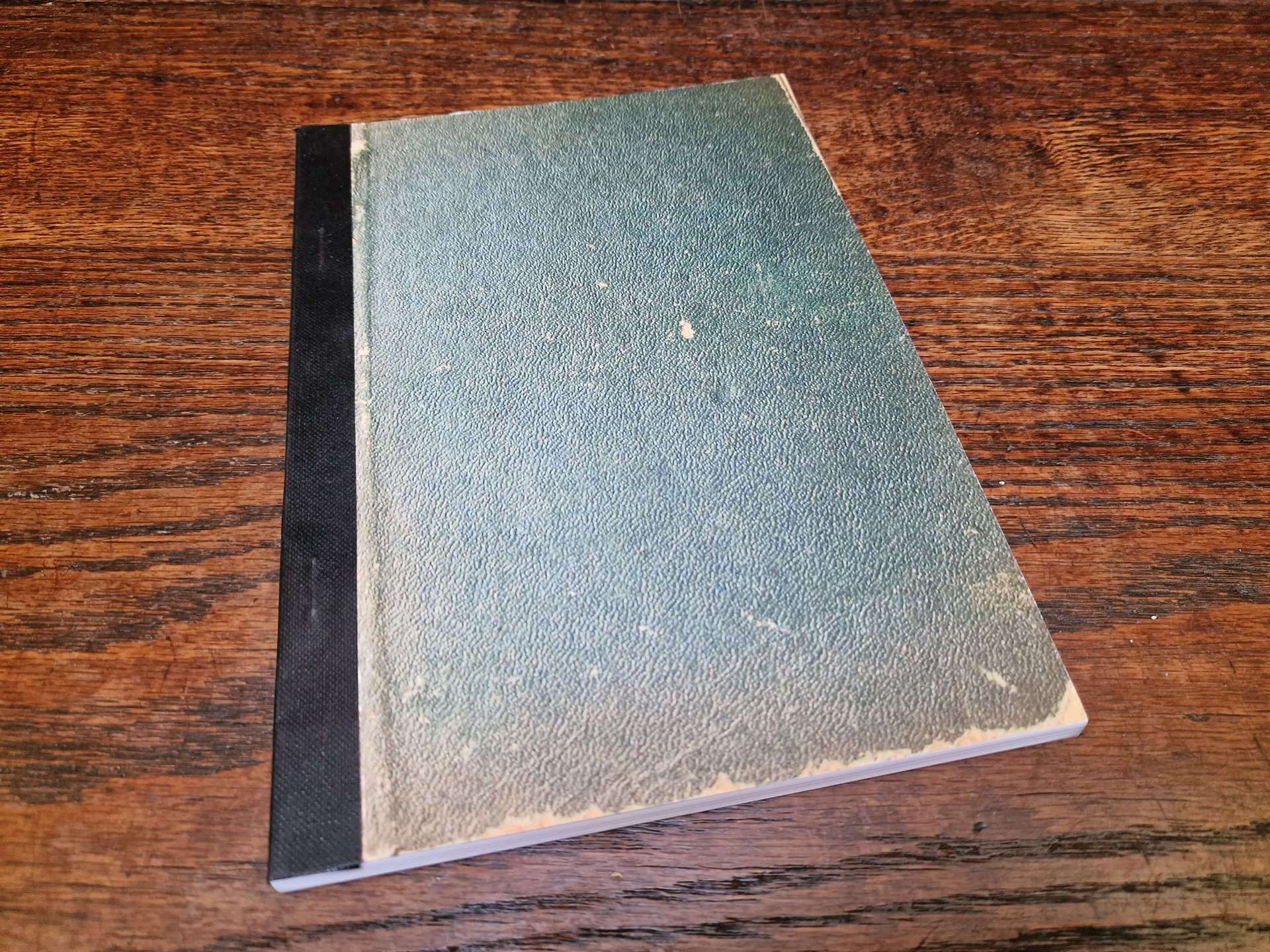
Alfred Wainwright’s decision to begin his book with Dove Crag can be understood as a strategic choice. Dove Crag, being a simpler fell and a prominent spur of Fairfield, provided an easy start to his project. Its location and the relatively straightforward path to its summit from Ambleside made it an ideal candidate for the first write-up.
Wainwright’s commitment to perfection is evident in his approach to the book’s layout and presentation. His background as a pen-and-ink artist meant that every page was handwritten and accompanied by detailed drawings. This personal touch added a unique character to his guides. However, his dissatisfaction with the initial left-aligned layout led him to discard over 100 pages and start anew, this time ensuring the text was justified on both sides.
The success of Wainwright’s seven guides, published between 1955 and 1966, underscores the impact of his dedication. These guides have become the definitive references for the Lakeland fells, revered for their detailed descriptions and hand-drawn illustrations. Wainwright’s ongoing legacy is evidenced by the continued popularity of his books, which had sold over a million copies by 1986. That figure has more than doubled in recent years, highlighting his significant contribution to the world of fellwalking and the appreciation of the natural beauty of the Lake District.

<<>>
As part of the anniversary celebrations, I had the unique opportunity to visit Wainwright’s original home in Kendal, where his remarkable journey started. Accompanied by Andrew Nichol, the former General Printing and Book Publishing Manager at the Westmorland Gazette, we explored this historic site on a scorching summer day. It was a poignant moment, especially for Andrew, who hadn’t set foot in Kendal Green for over three decades.
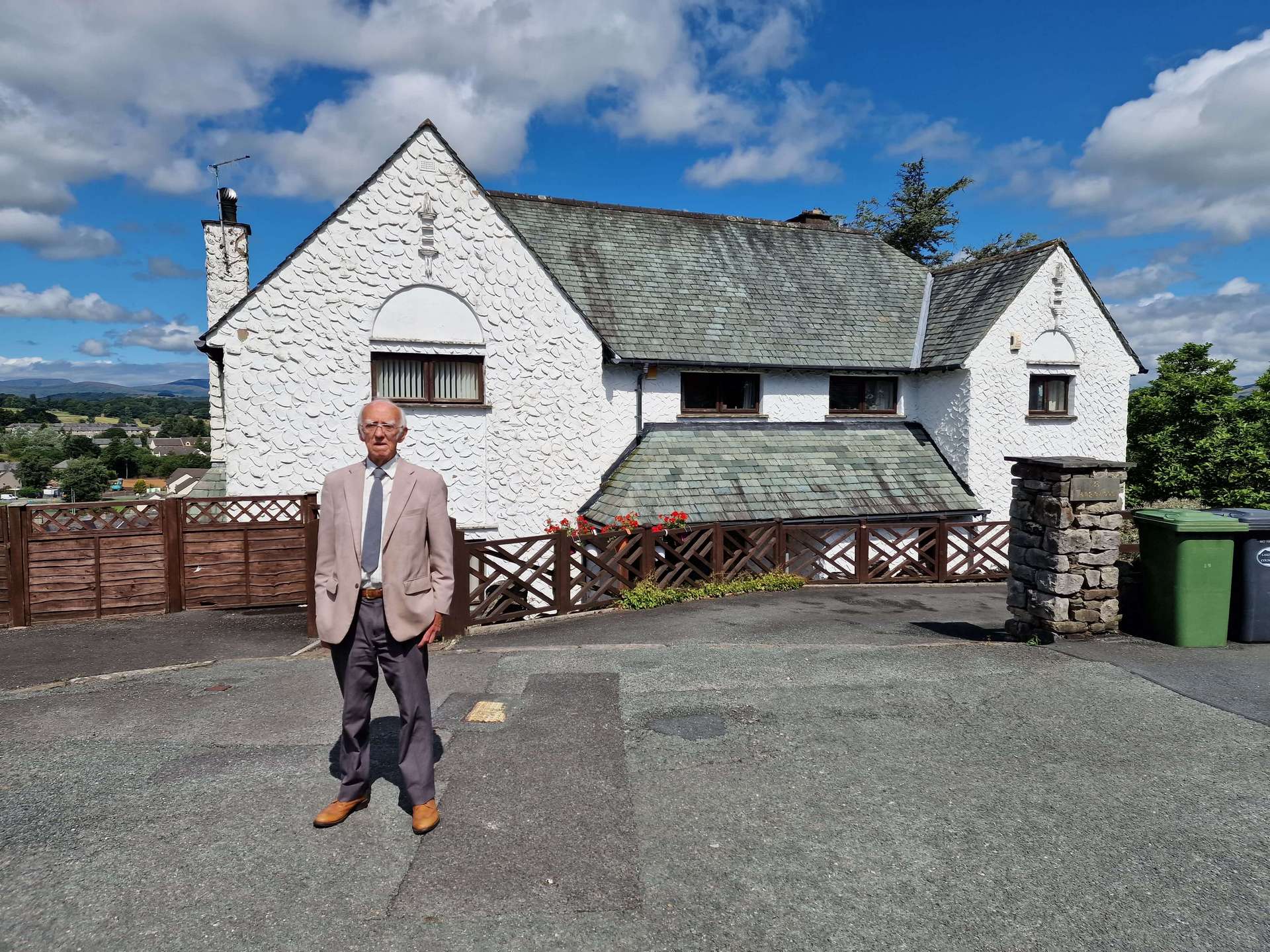
Colin, Susan Rowley, and their son Chris welcomed us warmly into their home, which once belonged to Wainwright. During our visit, Susan shared fascinating details about the house’s history and mentioned the 2007 documentary “The Man Who Loved the Lakes,” filmed there. They graciously guided us on a comprehensive tour, during which I could align original photographs of Wainwright with the very rooms where they were taken. Noting that Susan was unfamiliar with these photos, I presented her with a complete set as a keepsake. Reflecting on his past, Andrew recounted his bi-weekly meetings with Wainwright, many of which took place in the living room.


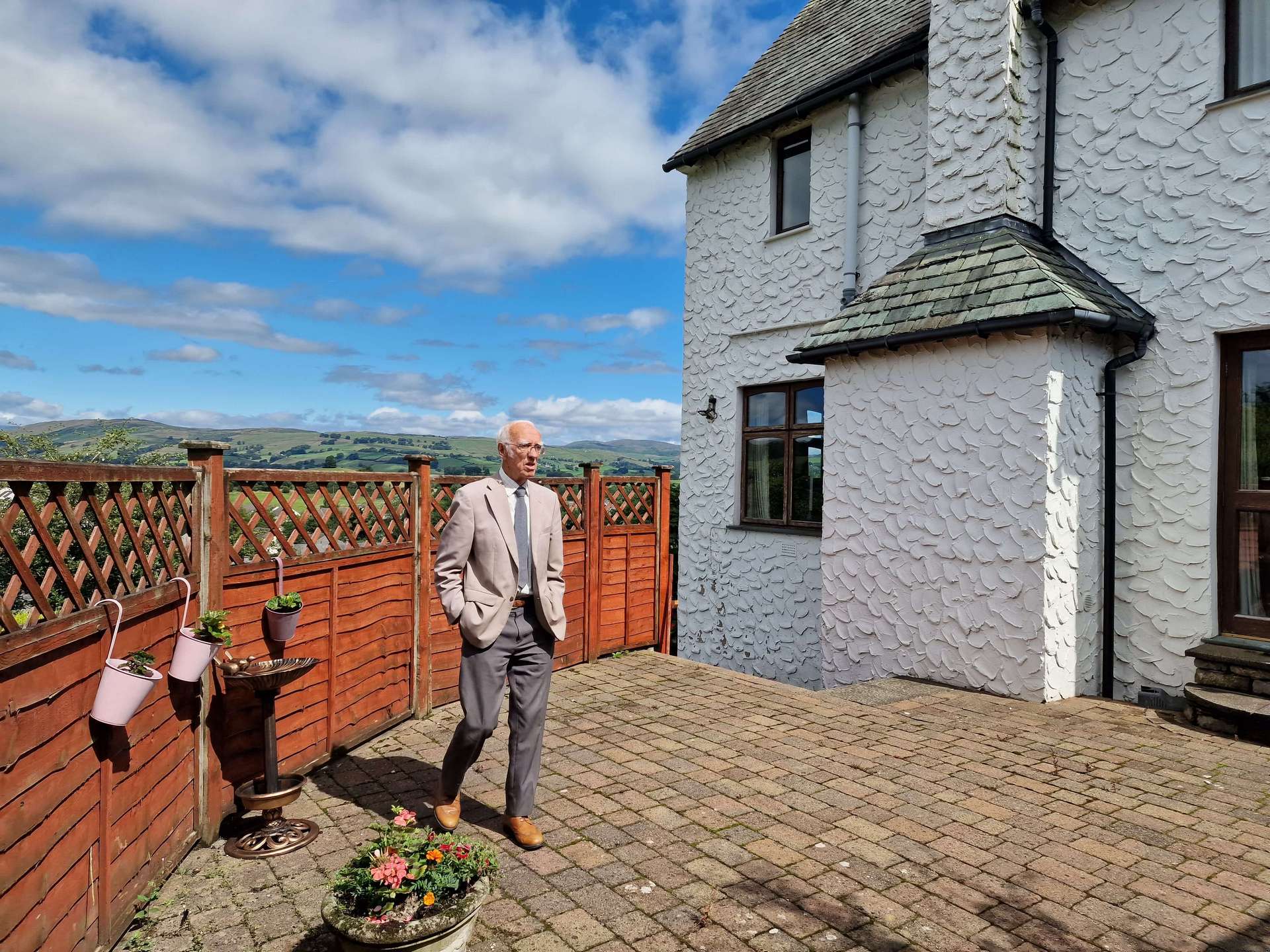

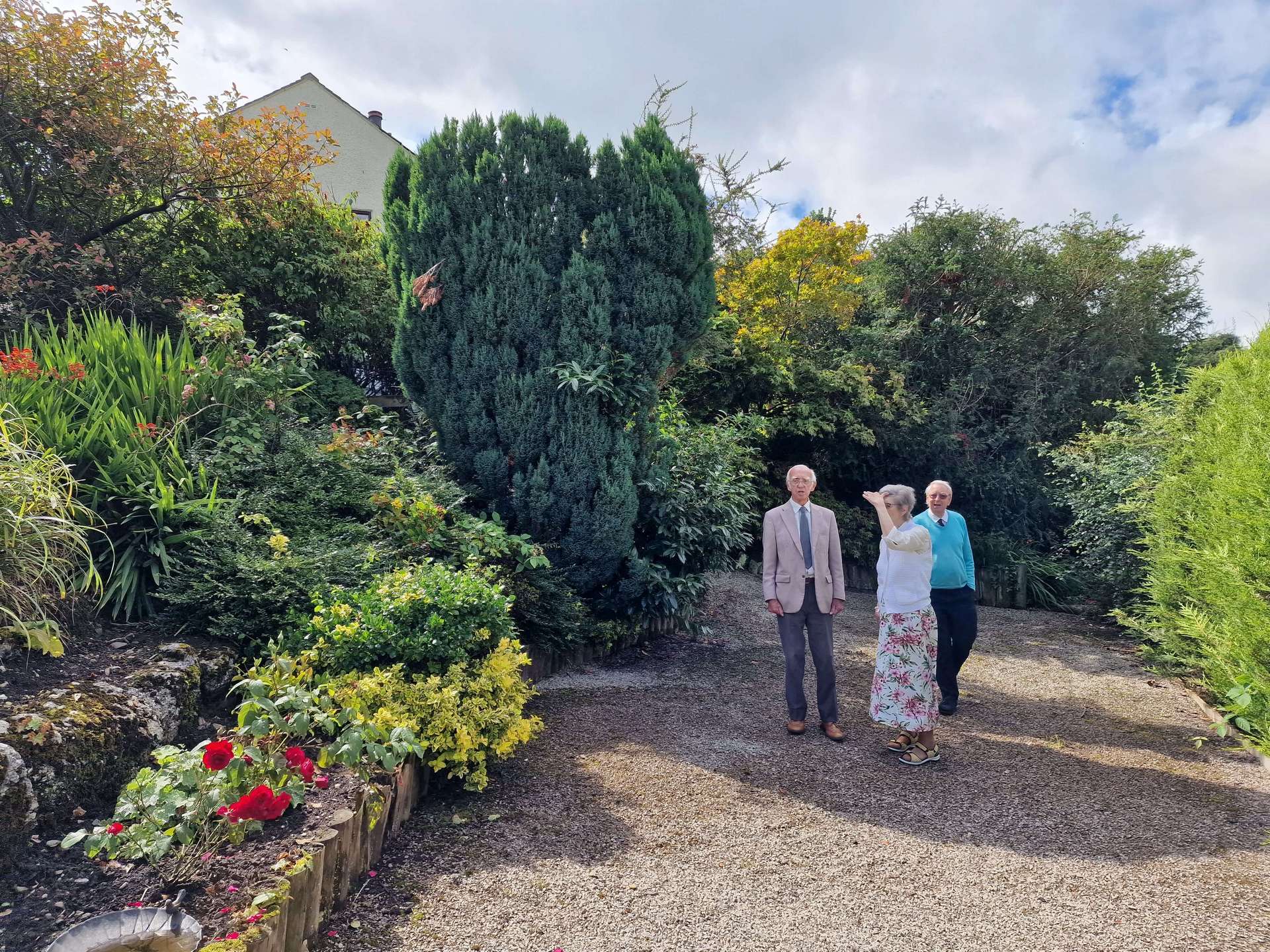

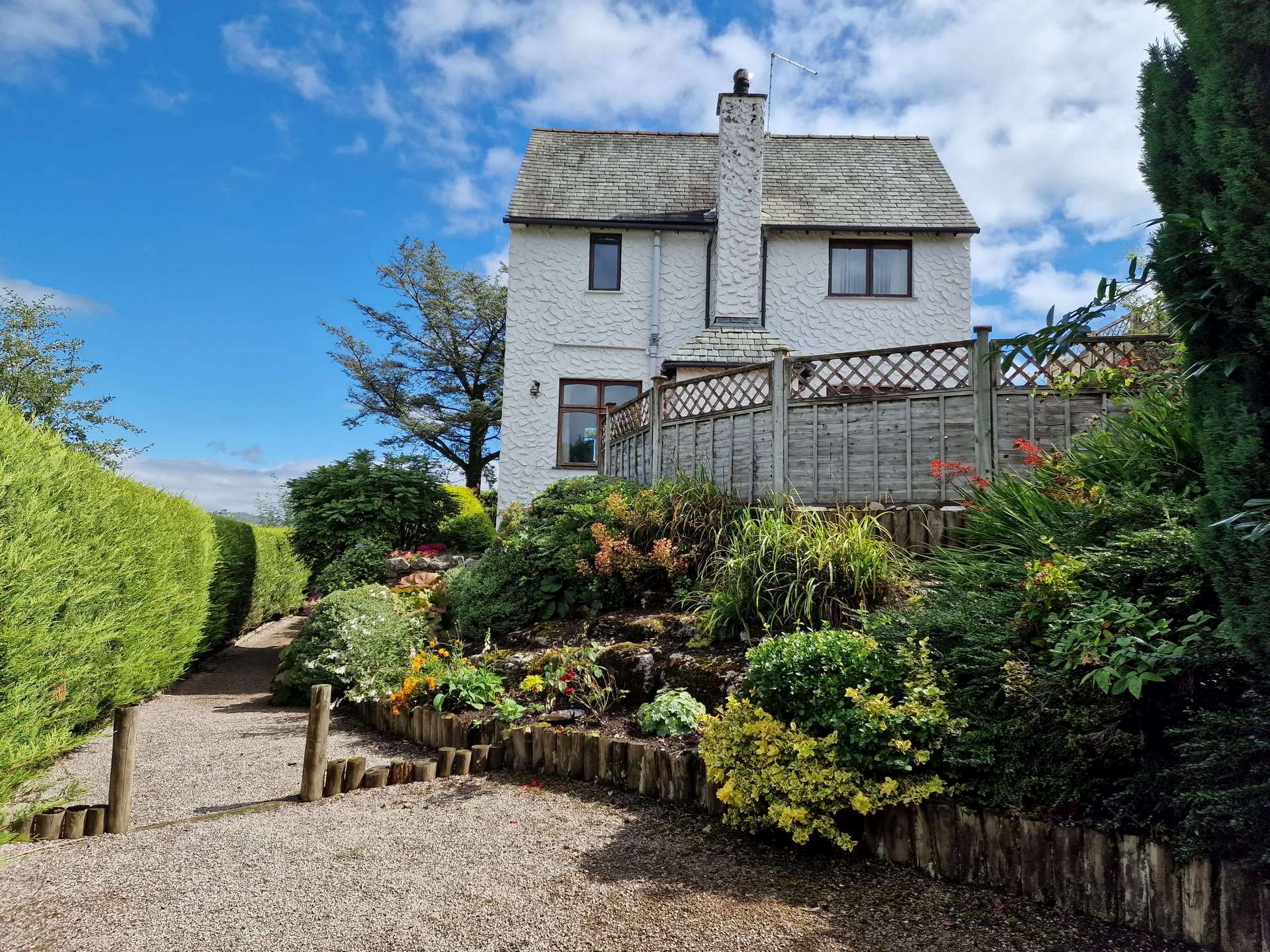
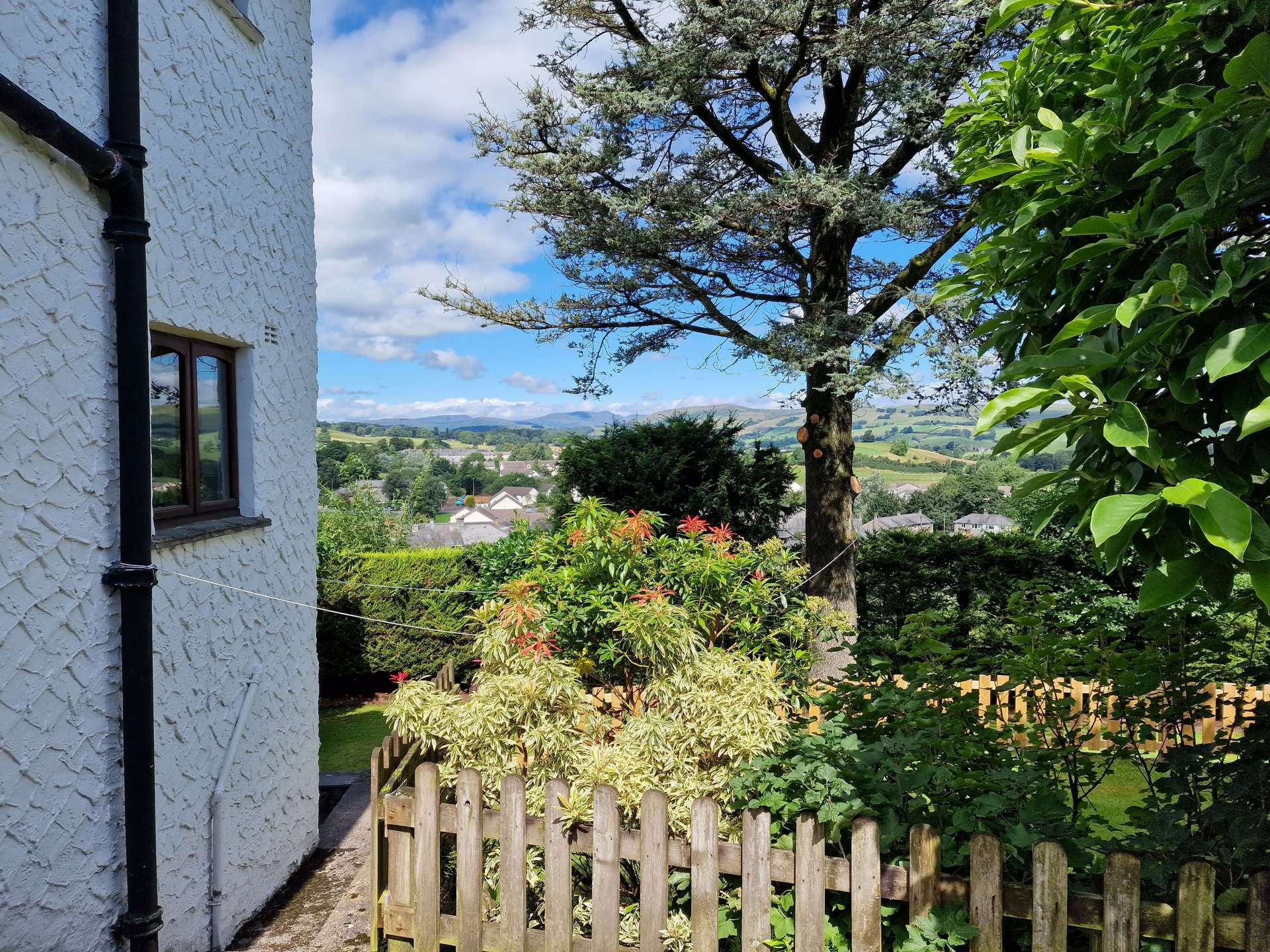
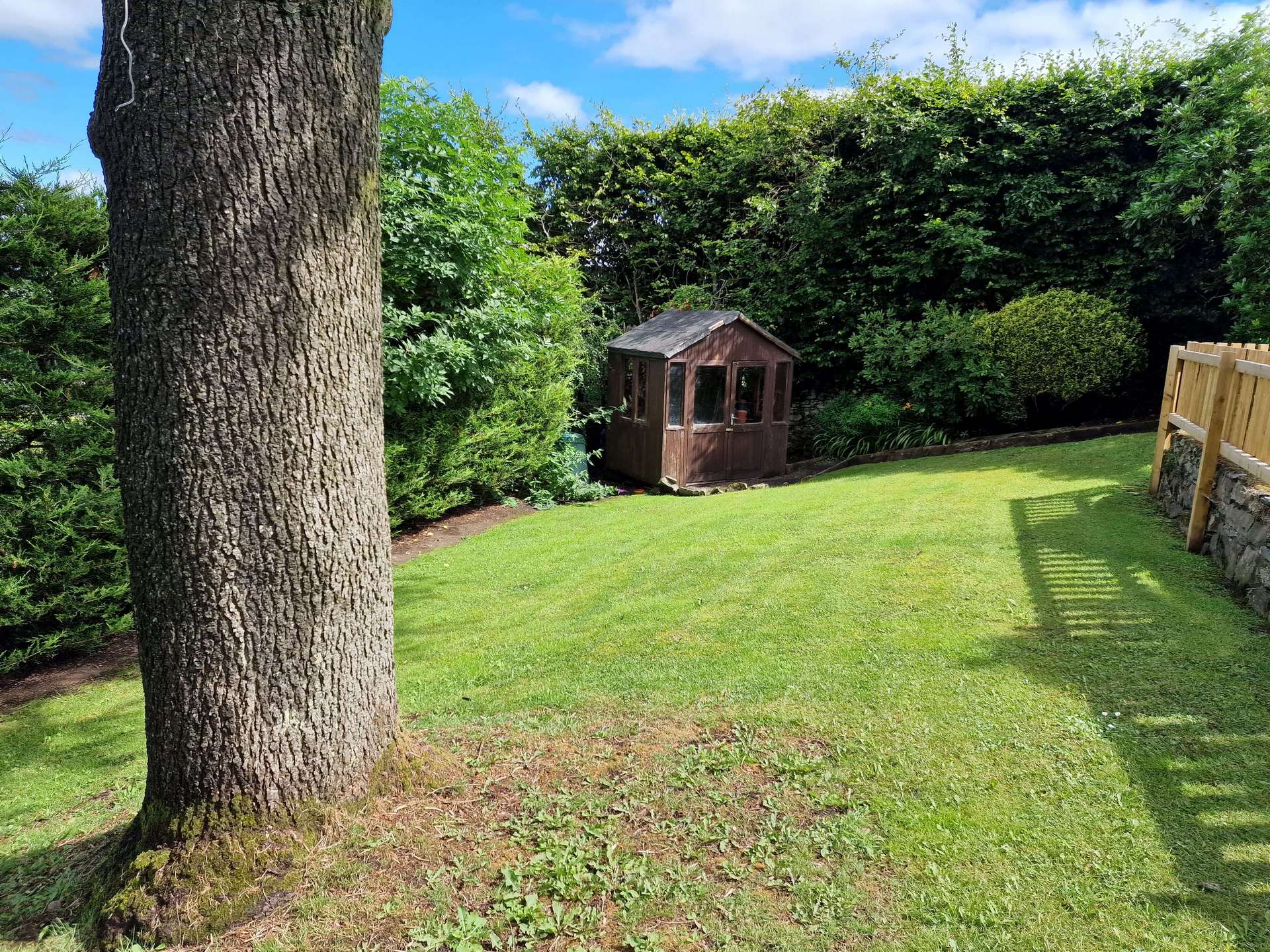






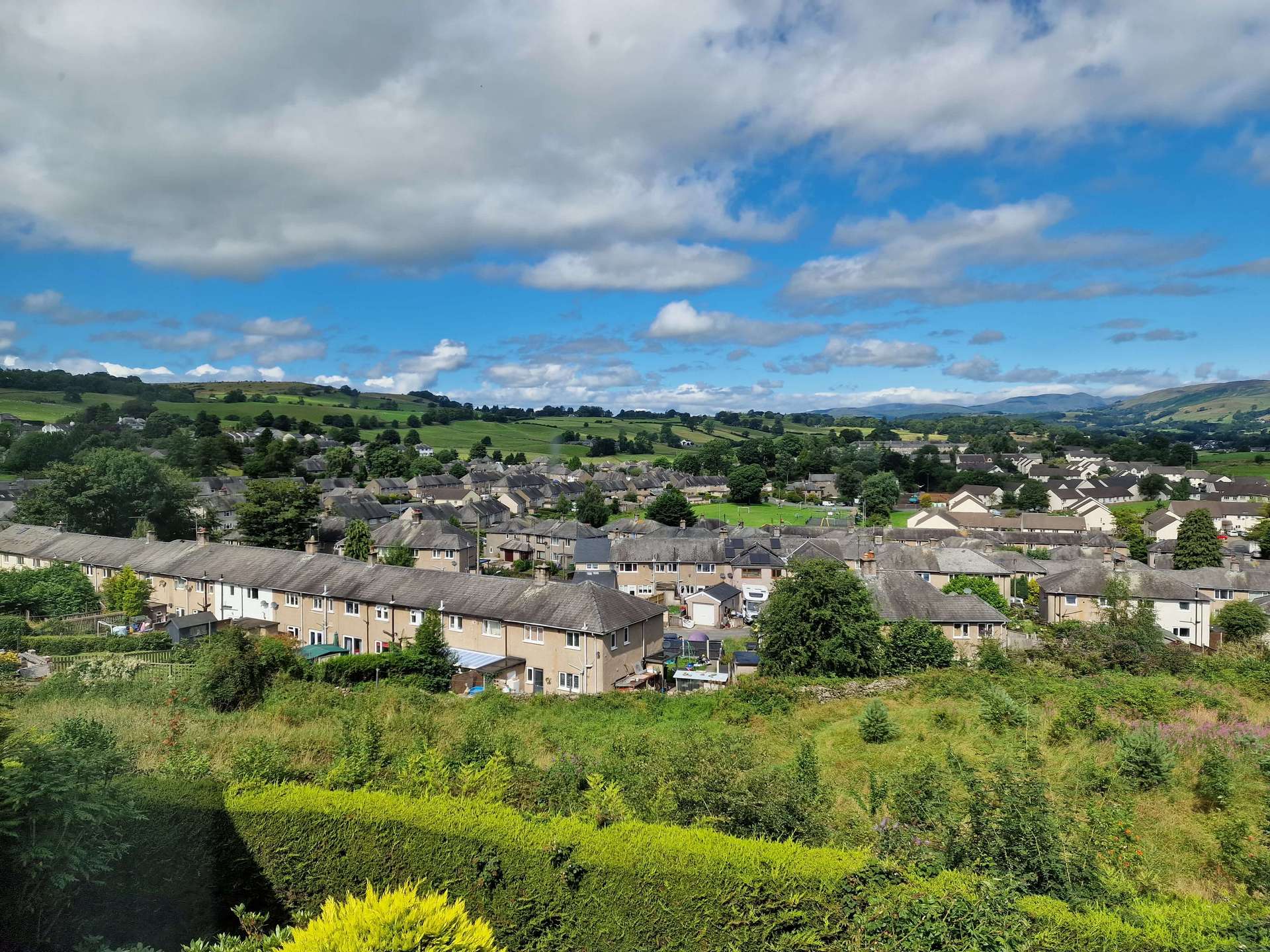


Standing in Wainwright’s original study, where he penned nearly 60 books, felt surreal. Gazing out the window towards the Kentmere fells, I tried to tap into Wainwright’s inspiration in that spot. The experience was enchanting for me and profoundly moving for Andrew. Immense gratitude is owed to Colin, Susan, and Chris for their exceptional hospitality. We’ve arranged to revisit this remarkable place on the evening of Wednesday, 9 November, coinciding precisely with the anniversary.
<<>>
Leading up to the anniversary, I organised a commemorative walk to the summit of Dove Crag from Ambleside, tracing Wainwright’s steps. The journey included traversing Low Pike and High Pike. My wife, Priscilla, and I invited Alfred Wainwright Books & Memorabilia Facebook Group members to join us. This day was extraordinary, marked by a sense of unity as everyone gathered to celebrate this special anniversary.
Our group assembled early in Ambleside, and following a brief introductory exchange, we embarked on our ascent. Although several attendees were approaching Dove Crag from various directions, we had arranged to convene at noon for the summit. The hike was an opportunity to connect with fellow enthusiasts, creating a bond over our shared interests. Despite the weather gradually deteriorating, the camaraderie and collective spirit among us overshadowed any discomfort from the changing conditions.
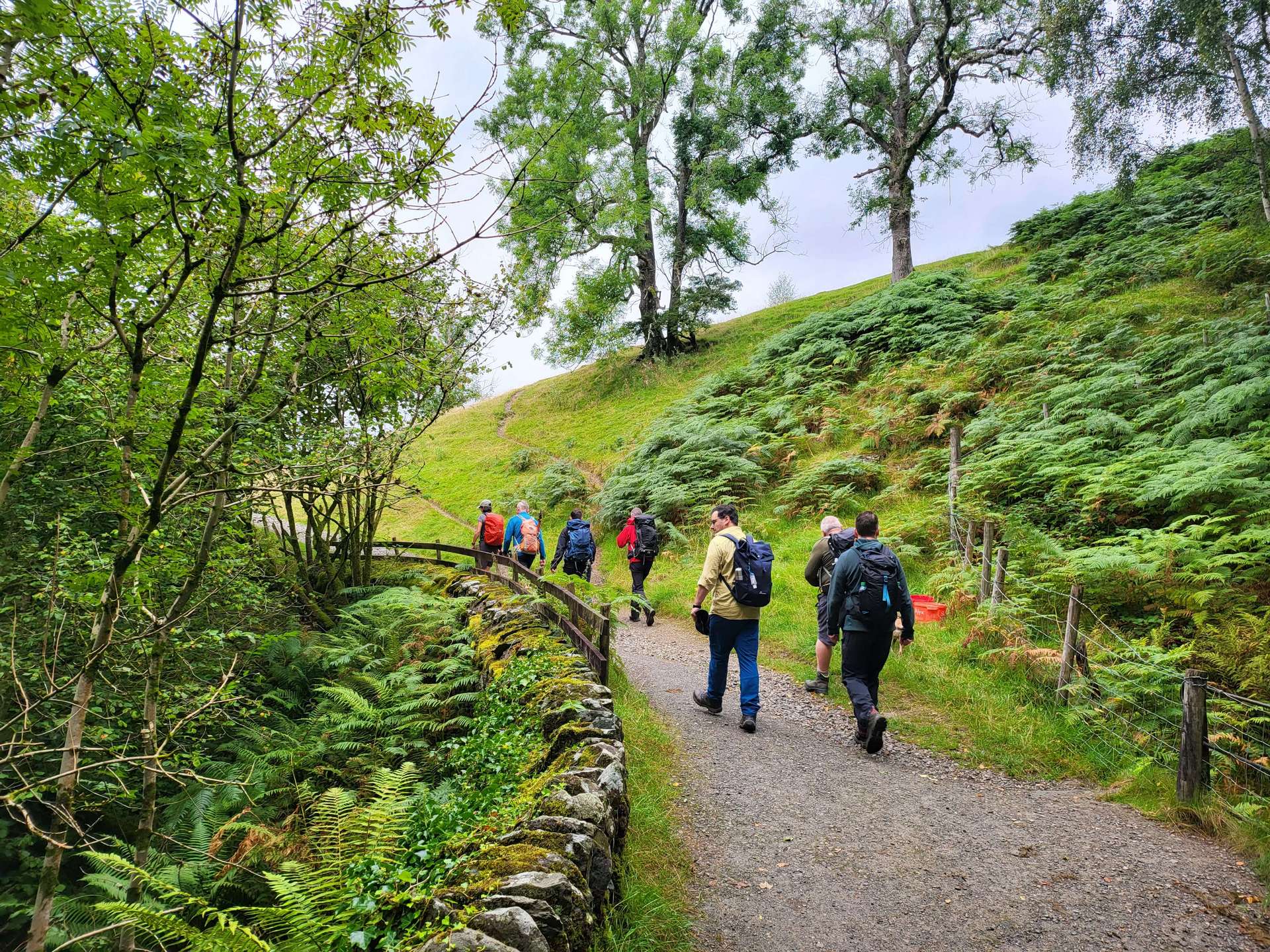
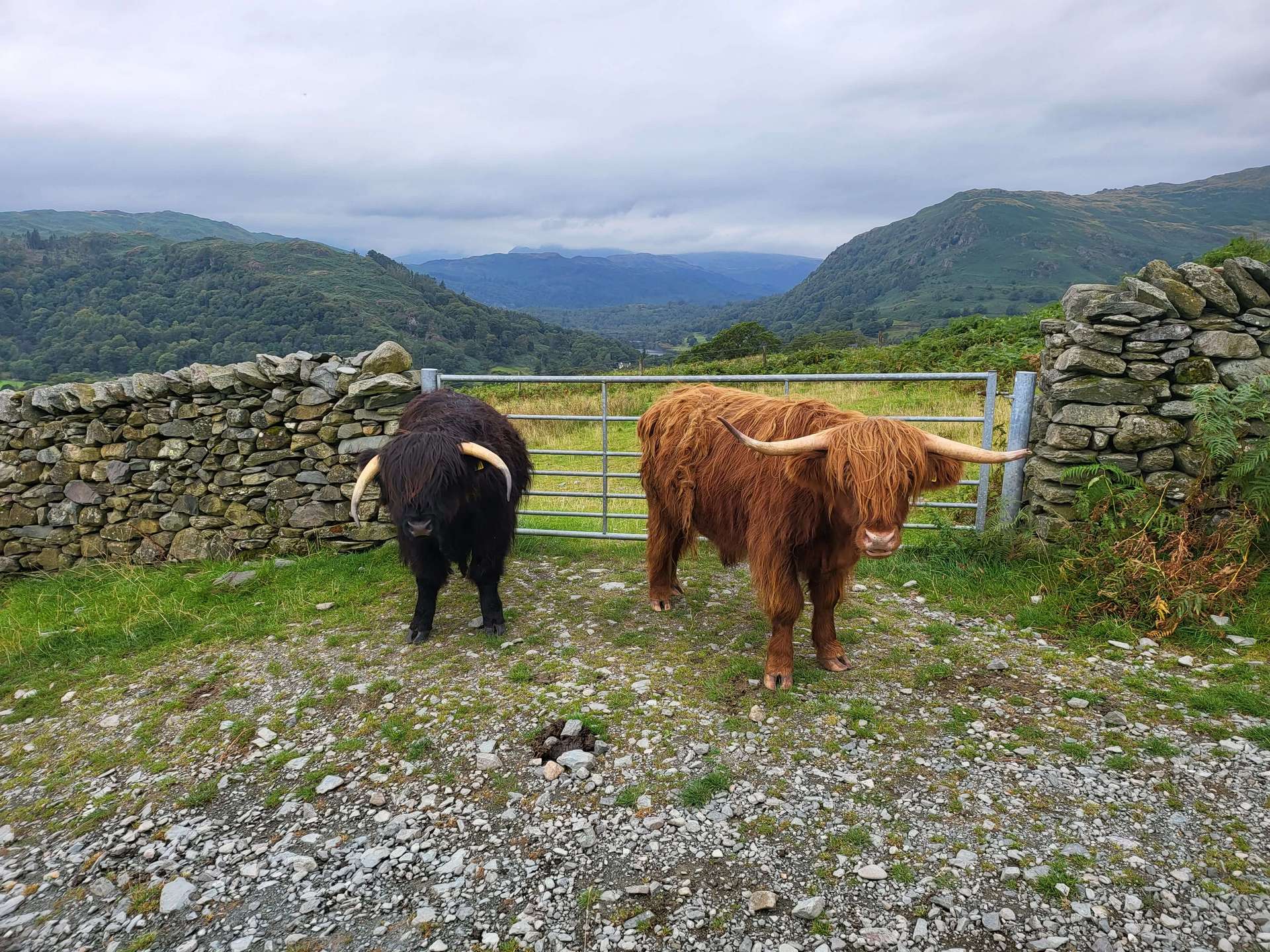
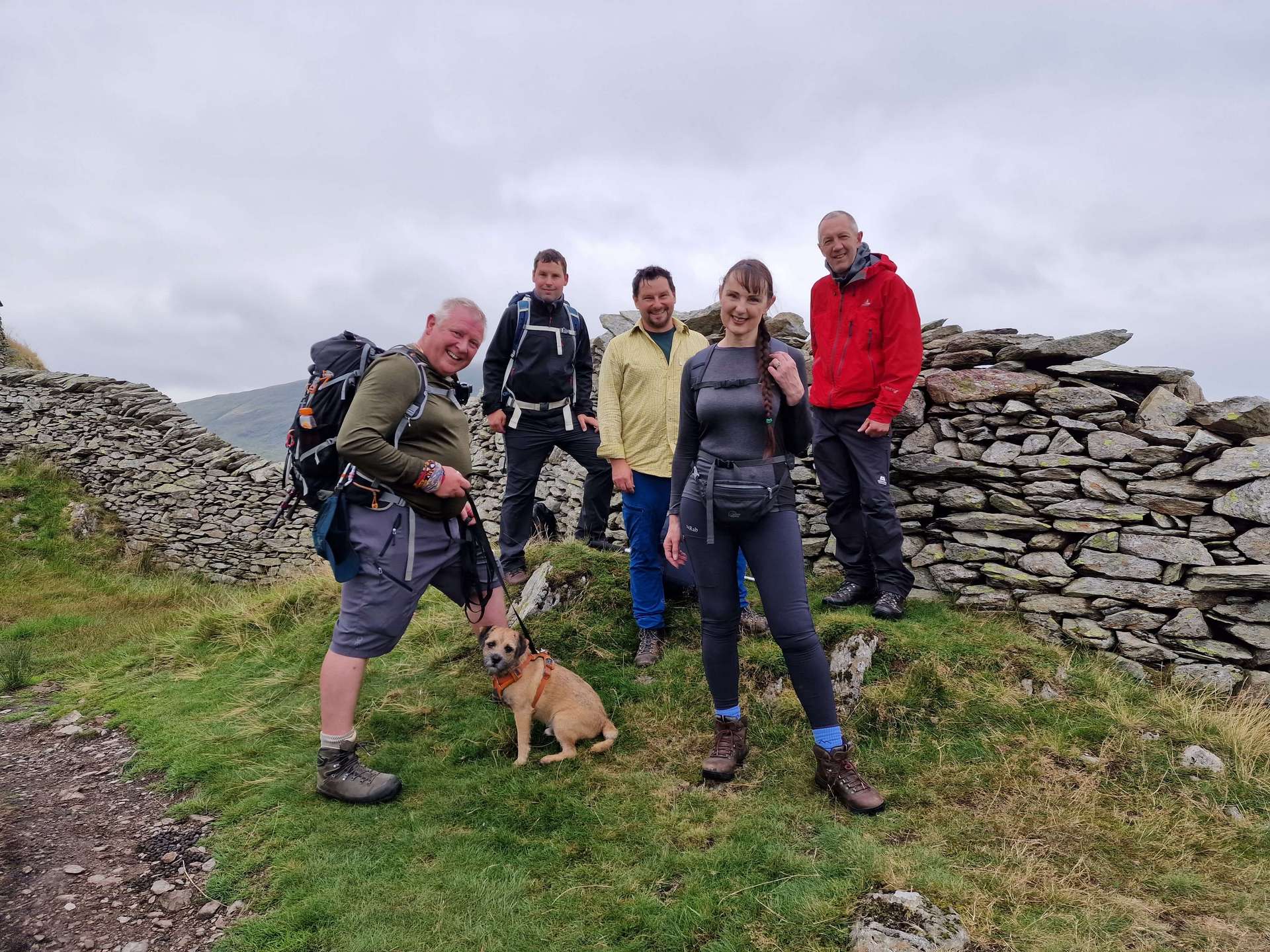
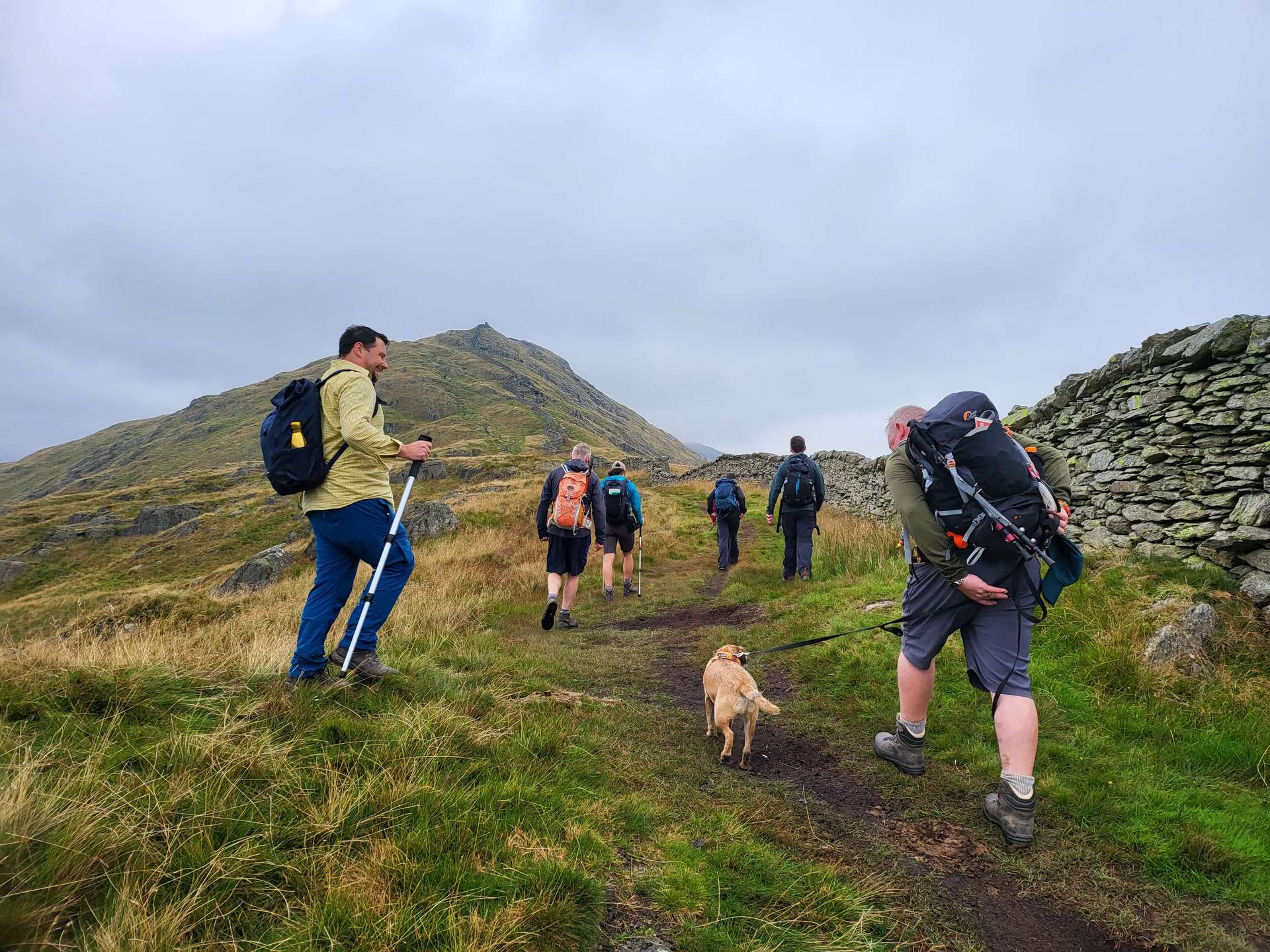
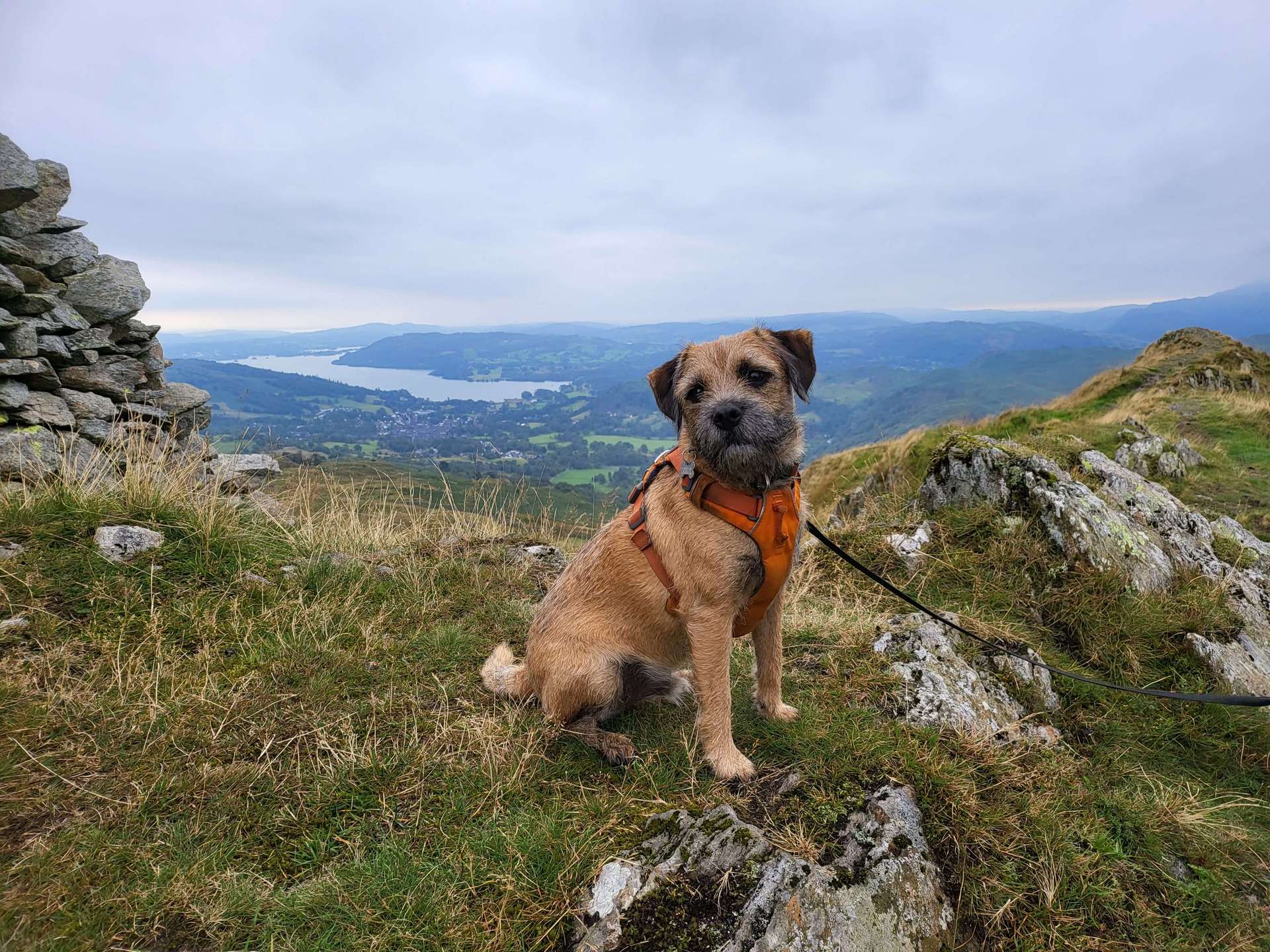
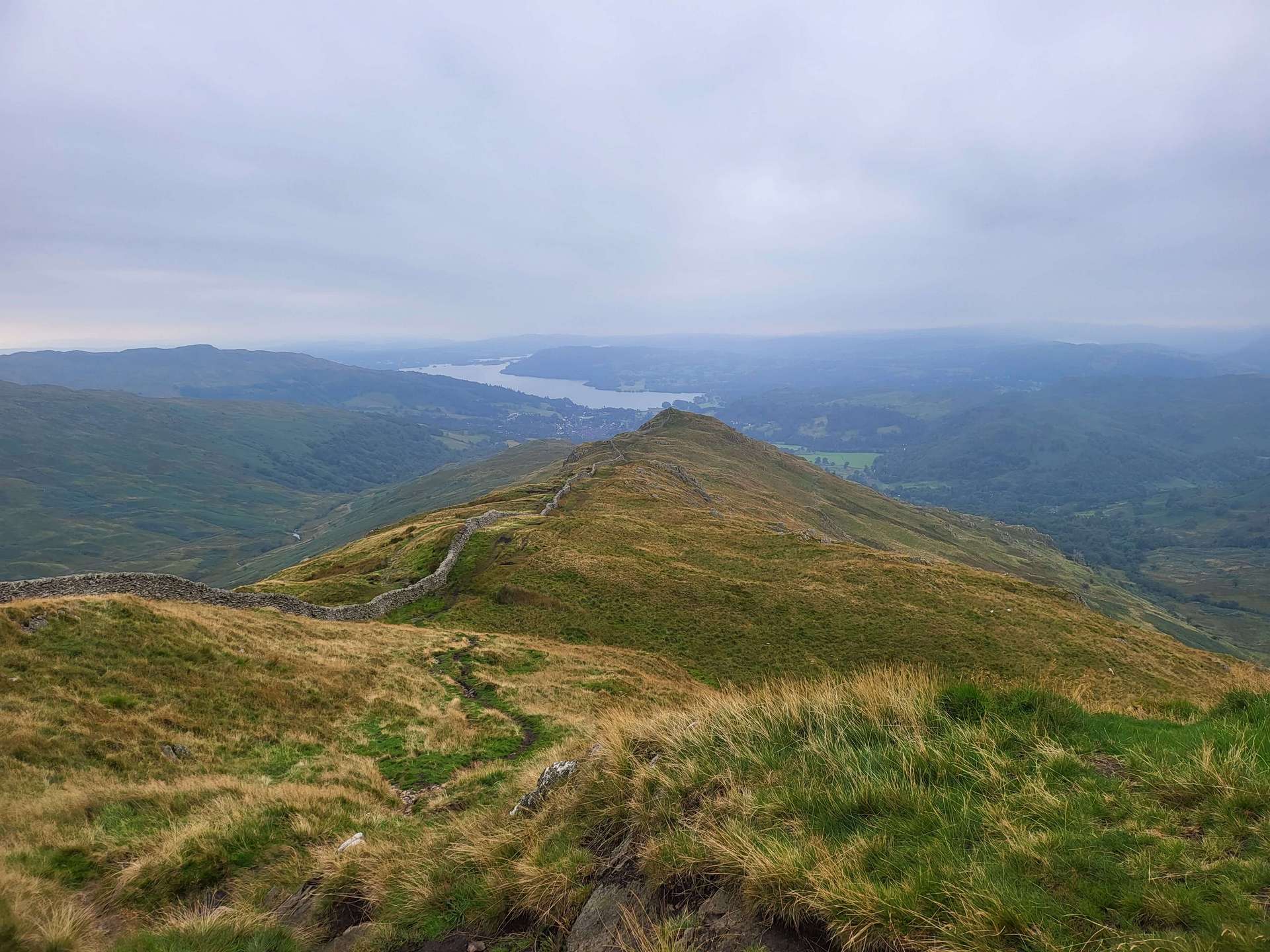
As we progressed, we found ourselves enveloped in mist, with the cloud base hanging low around us. Our group’s morale stayed buoyant despite the limited visibility and enveloping fog. It wasn’t long before we encountered other groups, materialising from the dense mist just a few yards from the summit.
After reaching the summit and sharing a communal lunch, we seized the opportunity to capture the moment with several group photographs. These photos were not just images but symbols of our shared experience and triumph over the elements. Subsequently, we descended back to Ambleside, choosing the route via Scandale, concluding a remarkable journey honouring Alfred Wainwright’s legacy.
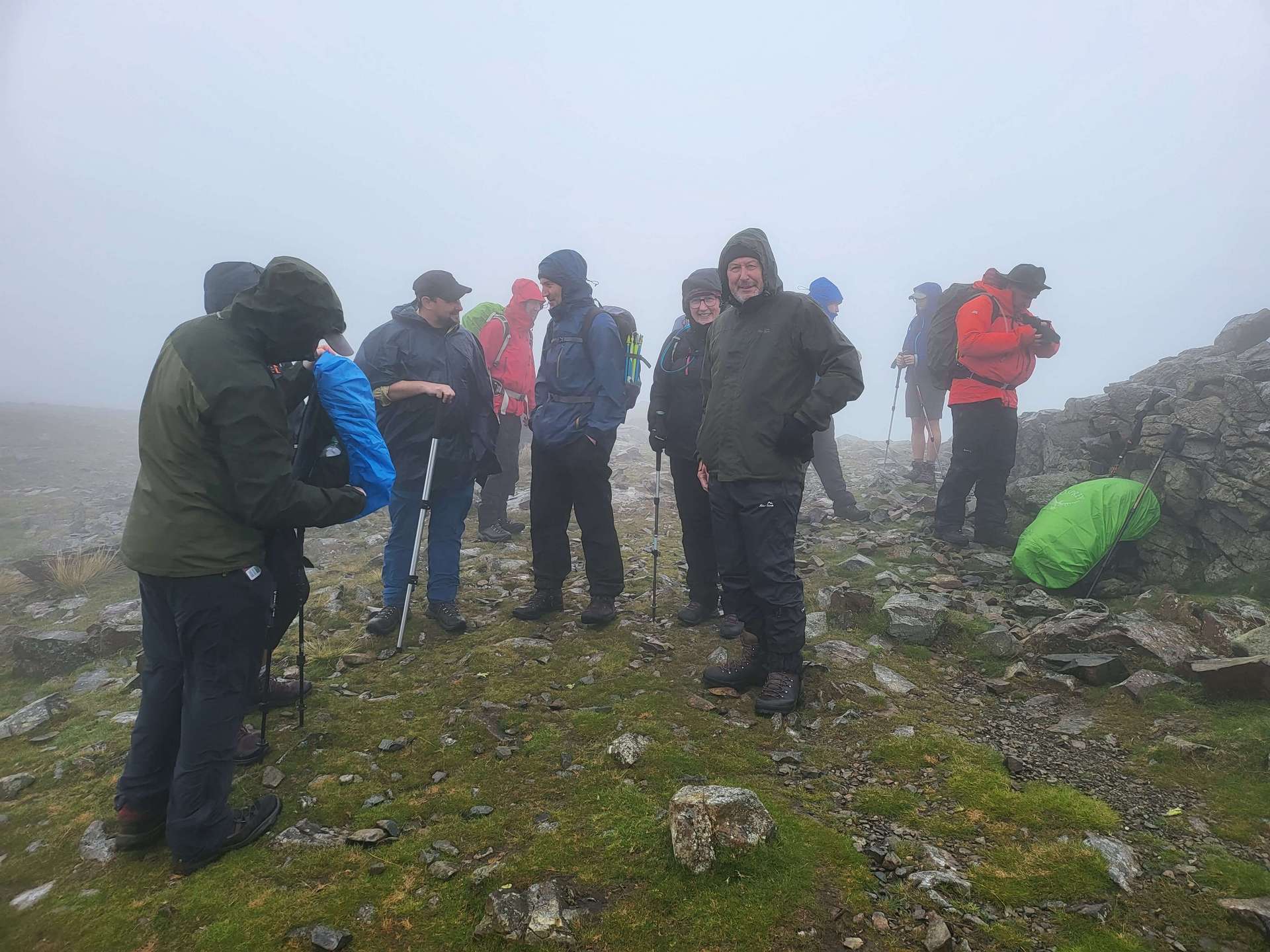


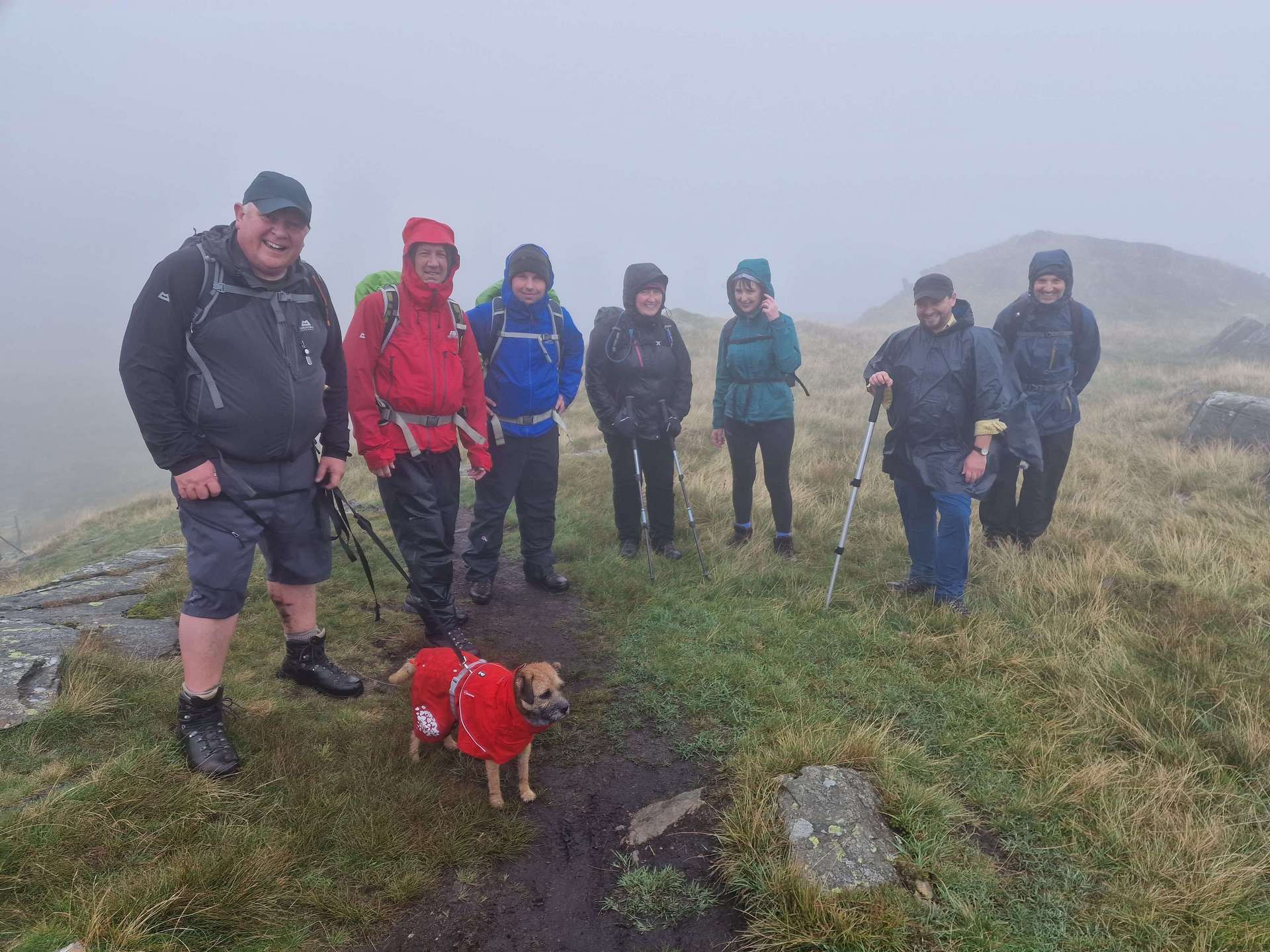
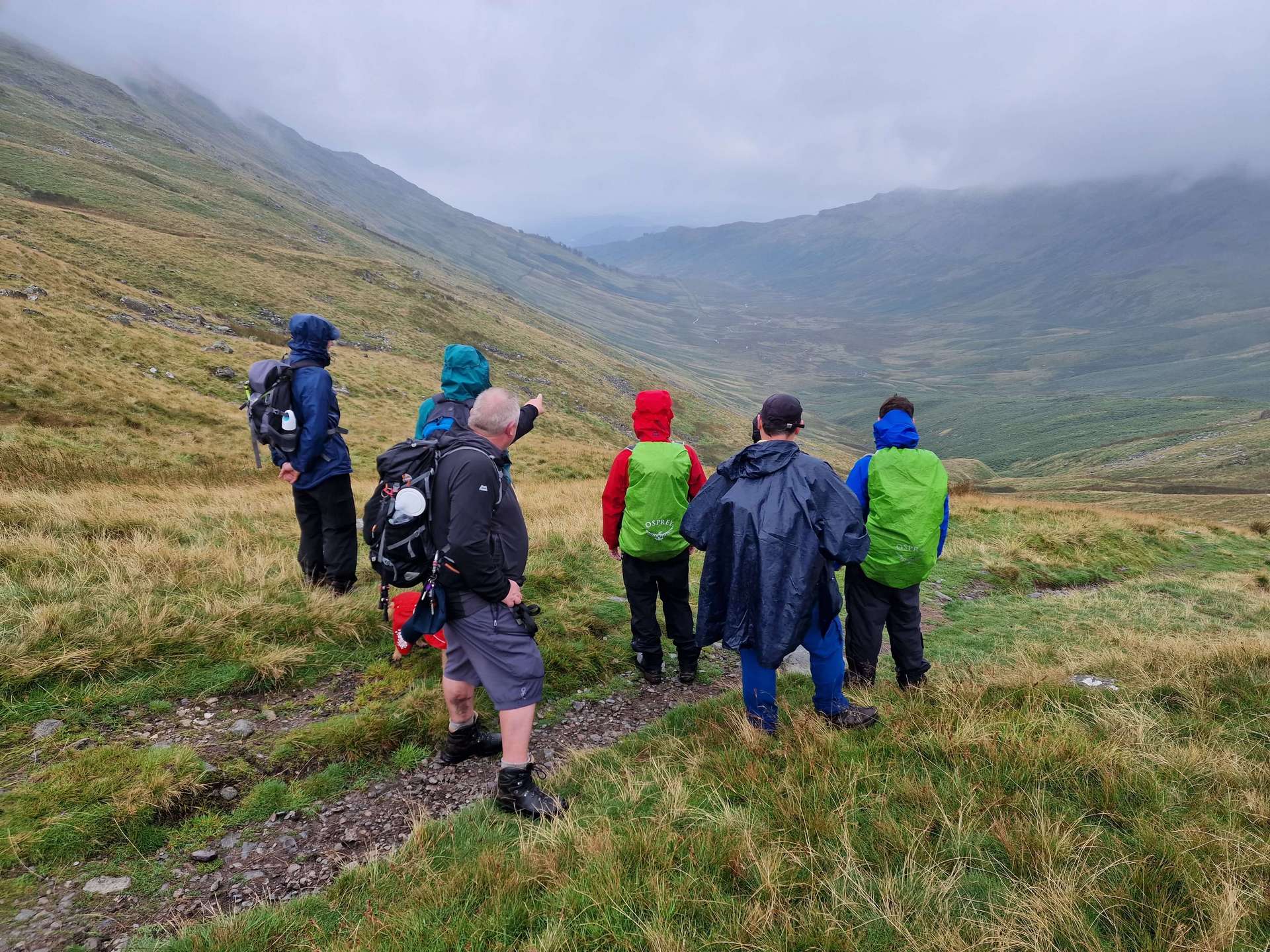
The weather gradually cleared as we descended, transforming our surroundings. A couple of hours later, we found ourselves back in Ambleside, now bathed in glorious sunshine—a stark contrast to the conditions we had encountered earlier. This marked the end of a successful mission, and to celebrate, we all gathered at the Golden Rule pub for a well-deserved drink.
The opportunity to meet and share this experience with everyone was genuinely delightful. I want to extend my heartfelt thanks to all who participated in the walk. Despite the less-than-ideal weather, the turnout was impressive, and seeing many enthusiastic faces was heartwarming.
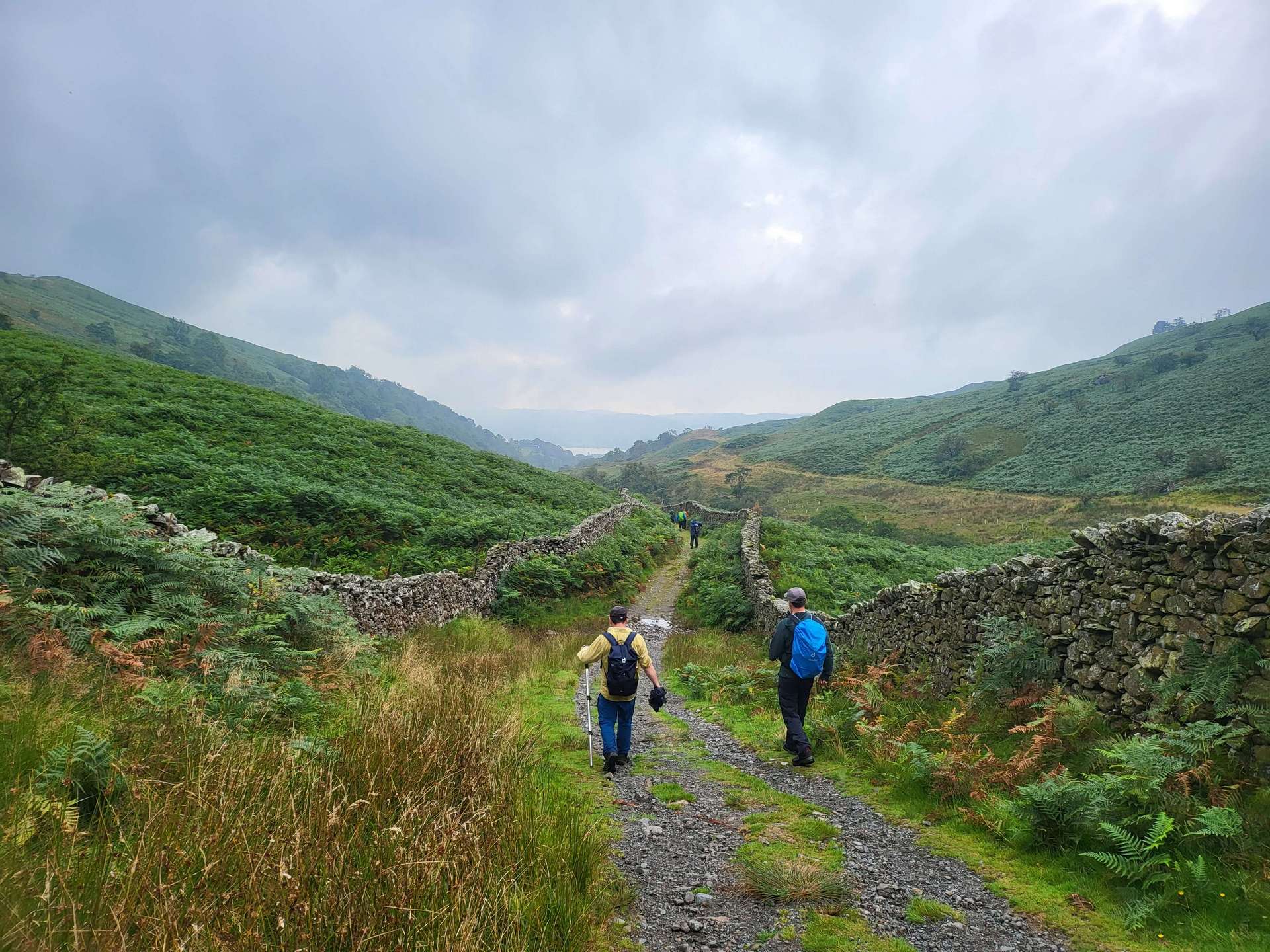
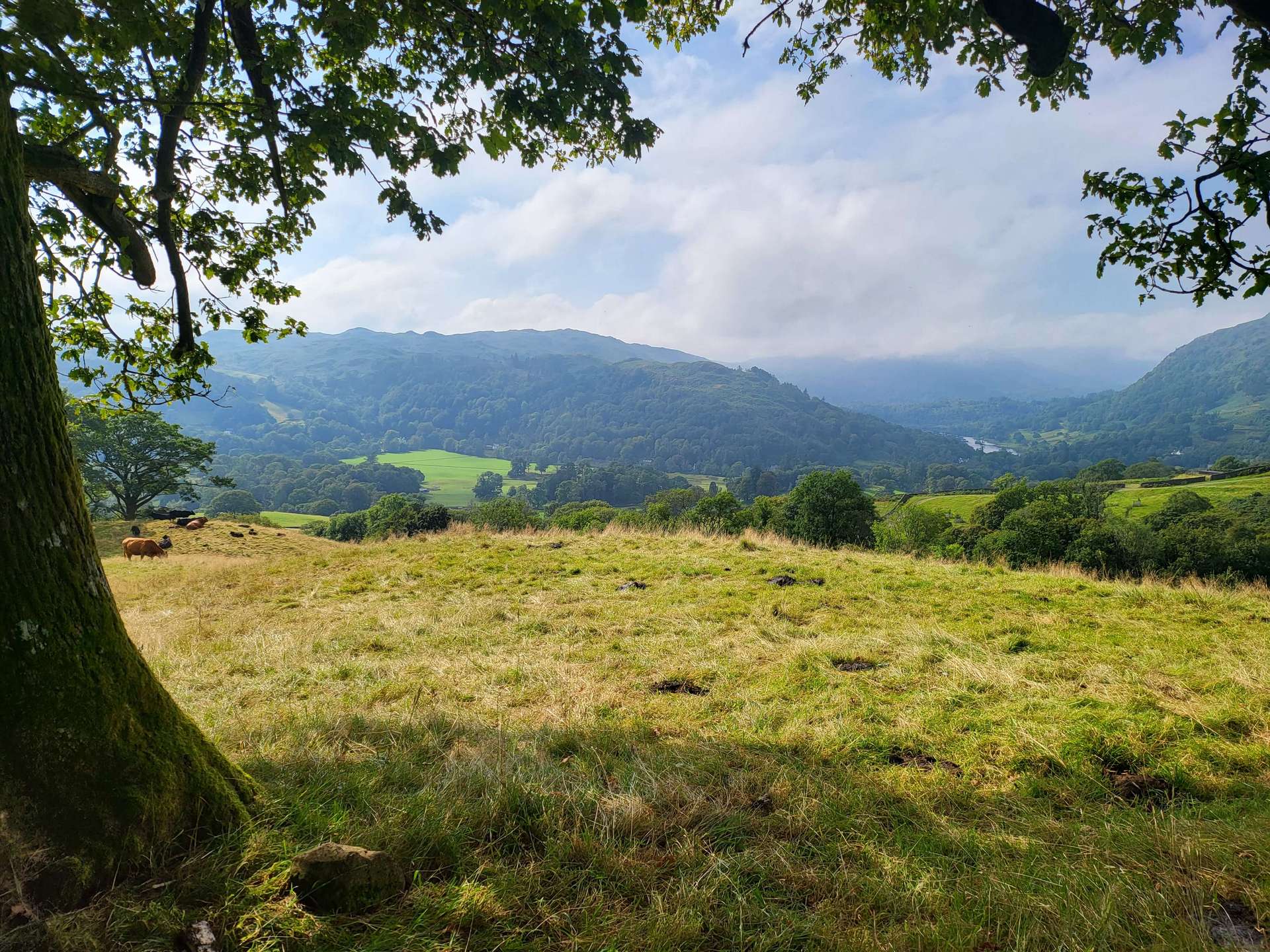
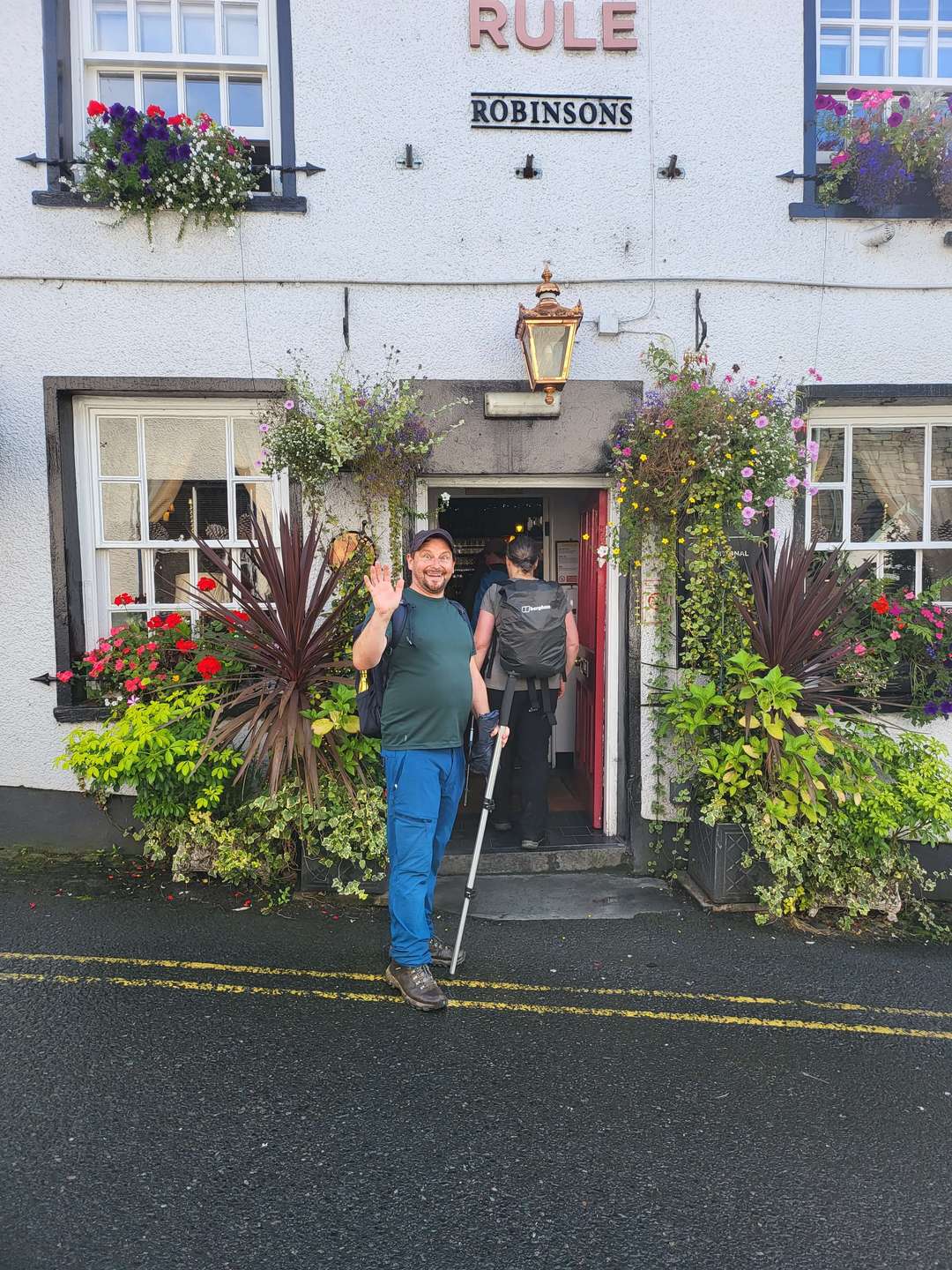

<<>>
One final celebration was held on the evening of Wednesday, 9 November 2022. This date marked precisely 70 years since Wainwright began his work on the Dove Crag chapter of his first guide. My wife Priscilla, Andrew Nichol and I met Susan and Colin at Kendal Green for this special anniversary. Andrew shared numerous insightful stories about Wainwright, enriching our understanding of his legacy. I contributed to the occasion by bringing several rare artefacts, including an original manuscript, produced in this very room. Additionally, the photographs of Wainwright that I had previously given Susan were being framed, soon to be displayed in Wainwright’s former study, adding a personal touch to this gathering.





To express our gratitude to Susan and Colin, we chose the Wild Boar Inn at Windermere as our dining venue, opting for the classic fish and chips. This choice was not just about the food; the Wild Boar Inn holds historical significance, having been the location for several notable events by the Westmorland Gazette. This included Harry Firth’s retirement party in 1982, which Wainwright attended.
Following the meal, one final task remained: for us all to raise a glass to Wainwright as thanks for the pleasure he has given to so many people. Cheers, Mr Wainwright… here’s to the next 70 years.

<<>>
Photo acknowledgements, the Duff Family and Mike Barker.
Back to top of page

